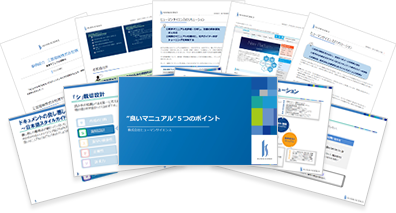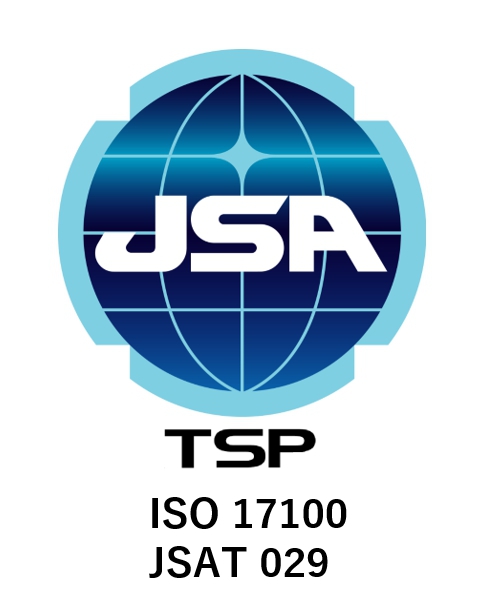
Hello, I am N, the production director. I am responsible for directing the creation of operation manuals and business manuals for companies in various fields, including the manufacturing industry.
In the past 2-3 years, I have felt particularly impressive changes. Previously, inquiries were mainly about wanting to "create manuals in Word" or "organize PDF manuals," but recently, there has been a surge in requests such as "I want to digitize manuals to accelerate internal DX promotion" and "I want to digitalize manuals so that employees in remote locations can use them immediately."
After the COVID-19 pandemic, the wave of digitalizing documents is definitely sweeping through various companies. However, it is not enough to simply digitize manuals and post them on the internet without a plan. Various preparations are necessary, such as a transition process to digitalization that does not cause confusion and considerations for maintainability to ensure continuity.
This time, I would like to convey specific points about "web-based manuals" that can actually be used in various workplaces, based on lessons learned from past support cases.
- Table of Contents
-
- 1. The Necessity of Webifying Manuals
1-1. What Does It Mean to Webify a Manual?
1-2. The Background of Manual Webification - 2. Benefits of Web-based Manuals
2-1. Benefits for Readers
2-2. Benefits for Creators - 3. How to Webify Manuals
3-1. Method
3-2. Procedure - 4. Key Points for Web-Based Manuals
- 5. Consult Human Science for Manual Creation and Improvement
- 1. The Necessity of Webifying Manuals
1. The Necessity of Web-Based Manuals

In recent years, many companies have been transitioning their manuals to the web. This is due to the increasing demand for web manuals that can be easily accessed from anywhere, in response to the digital age. Here, we will explain in detail the significance and necessity of converting manuals to the web.
1-1. What does it mean to convert a manual to the web?
Webification of manuals refers to making existing manuals accessible through a web browser via the Internet. It involves migrating manuals stored in paper or electronic formats to the web, allowing users to freely access them over the Internet. Webified manuals can be checked anytime from smartphones or computers, greatly enhancing convenience for users.
The manuals in question are truly diverse. We can convert all kinds of manuals to the web, from customer-facing manuals like product user guides to internal business manuals. For example, you can now view the instruction manual for home appliances on your smartphone, or check the document application procedures for your workplace on your computer.
1-2. Background of Web-based Manuals
So, why is the webification of manuals progressing now? There are mainly three significant backgrounds.
The first is the change in our information-seeking behavior. It has become common to "immediately search the internet when there is something we don't understand." For example, checking news, weather, or train schedules. In this context, having manuals in paper form is inconvenient for users.
The second point is that the speed of updates for products and services is increasing. Especially for digital products, updates occur frequently with the addition of new features and bug fixes. Printed manuals cannot keep up with this speed. By moving to the web, we can always provide the latest information.
The third point is the change in work styles. Due to the impact of the COVID-19 pandemic, many companies are advancing paperless operations and remote work. There is a demand for an environment where employees can access necessary information regardless of location, and the web-based manuals are one of the solutions to this issue.
2. Benefits of Web-based Manuals

By converting manuals to the web, there are many benefits for both users and creators. Below, we will explain the specific advantages for users (readers) and creators (companies).
2-1. Benefits for the Reader
Access the latest information anytime
With a smartphone or computer, you can access the information you need while commuting or on the go. It is very convenient because there is no need to "carry" it like a paper manual.
Additionally, even if there are changes to product specifications or updates to procedures, you can always refer to the latest version. There is no worry about looking at outdated information.
Improvement of Usability
The usability of manuals is greatly improved compared to paper.
– You can freely adjust the font size, making it easier to read.
– You can use the search function to quickly find the information you need.
– You can jump to the necessary items from the table of contents, eliminating the hassle of flipping through pages.
・Improvement of Self-Resolution Skills
By quickly accessing the necessary information, the likelihood of being able to solve problems on your own increases. You will find that there are more things you can resolve by yourself before contacting customer support.
2-2. Benefits for the Creator
・Improving Customer Satisfaction
By providing easy-to-understand and user-friendly manuals, the evaluation of products and services also improves. Aspects such as "the instructions are easy to read" and "problems can be resolved quickly" are directly linked to customer satisfaction.
- Easy updates
Unlike paper manuals, it is easy to modify and update the content. You can quickly reflect new information or correct errors as needed.
- Reduction of support costs
By increasing the user self-resolution rate, the burden of handling inquiries is reduced. This is particularly beneficial for companies that invest personnel in customer support and provide product support.
Collection of Feedback
By incorporating comment features and survey forms into web manuals, you can directly gather user feedback.
Additionally, by having access analysis features, you can capture what users are looking for and their needs.
You can understand requests such as "not clear" and "want to know more" and use them for improvements.
3. Methods and Procedures for Webifying Manuals

Next, we will explain in detail the methods and procedures for converting manuals to the web.
3-1. Method
While you can request a web development specialist to convert your manuals to the web, it can be expensive and requires a lot of time for creation and updates. Therefore, we recommend utilizing dedicated tools when converting manuals to the web.
These tools allow you to easily create and update web content without specialized knowledge. There are various options available (web tools, system tools, CMS, etc.), and recently, many tools have become available that can be easily operated by paying a monthly fee. Depending on the content and scale of the manual, as well as the features you want to incorporate, it is advisable to choose according to your needs.
Introduction to COCOMITE Implementation and Establishment Support Services
Introduction to Toaster Team Implementation and Support Services
When choosing such tools, "usability" is important. While creating manuals, it is common for content changes to occur along the way, and each time, the manual must also be revised. If the tool is difficult to use, it can take a lot of effort to make corrections, but by selecting an easy-to-use tool, this burden can be significantly reduced. Additionally, in light of the manual creation process, the presence or absence of features such as comment functions, preview screen display functions, and the ability for multiple people to work simultaneously are also key points in the selection process. Considering these factors, by implementing efficient and user-friendly tools, rapid work can be achieved, and the quality of the manuals can also be improved.
3-2. Procedure
Web conversion can be smoothly achieved by dividing it into five major stages.
1. We will organize the content of the current manual, identifying which sections are likely to be frequently read and which parts will require regular updates. Additionally, we will gather feedback from employees regarding the manual, summarizing any issues they are facing and areas they would like to see improved.
2. We will work on outlining the overall structure of the new manual. For example, we will consider who will use it and for what purpose, such as "for new employees to learn the basics during OJT" or "for employees to confirm the detailed procedures for administrative tasks." Based on that, we will discuss the order in which to present the information and how to organize the content to make it easy to understand.
3. Establish the rules for creating manuals. For example, whether to unify in a formal tone, how much technical terminology to use, and the criteria for including photos and diagrams. By sharing these detailed rules with all stakeholders, manuals of similar quality can be produced by anyone.
4. It is necessary to take time for the actual creation. Start by creating only a part and check whether the writing is unclear or deviates from the rules. While reflecting the opinions that arise from this, begin the overall creation. The work must be checked by multiple eyes, ensuring that there are no unclear parts and that important points are not overlooked as you proceed.
5. We will actually implement and proceed with the completed manual. This is actually the most important part. We will regularly listen to user feedback and update the content as necessary. By adding new information, we will develop a more user-friendly manual. What is particularly important is creating a system for continuous improvement. By designating a responsible department and fostering awareness of content management, we can utilize the manual as one that contains the latest and most reliable information.
4. Key Points for Web-Based Manuals

When converting manuals to the web, it is important to prioritize clarity and ease of search.
First, the user interface should be designed to be simple and intuitive to operate. Enhance the categorization and search functions to allow quick access to the necessary information. Additionally, explaining the operation methods and procedures through videos can promote visual understanding and convey complex content smoothly. This will result in a more user-friendly manual for the users.
Additionally, by standardizing the layout and arrangement of each page, users will be able to find information without confusion. By unifying the color scheme and fonts, a clear and professional impression can be created. Furthermore, let's choose the optimal tools with comprehensive support such as help and FAQs, and efficiently advance the web development process.
Once a web manual is created, it is important to regularly update it rather than consider it finished. By listening to user feedback and sometimes reviewing the content and structure, you can continue to improve clarity and usability, allowing it to be operated as a valuable manual.
5. Consult Human Science for Manual Creation and Improvement
The webification of manuals offers many benefits, such as the convenience for users to access the latest information from anywhere and the reduction of support costs for creators. Additionally, it is a beneficial initiative for companies in terms of the ease of collecting feedback and the ability to always provide up-to-date information.
Human Science provides one-stop support from the creation of Japanese manuals to English and multilingual translations. We have a long track record of handling numerous manuals since 1985. If you have any needs like the following, please feel free to contact us.
- I want to improve existing Japanese and English manuals to make them easier to understand.
- I am considering creating an English manual and would like to proceed step by step from the Japanese manual.
- We want to translate the Japanese manuals created in-house into English (and other languages) for use.
Feature 1: Extensive manual production experience focused on large and global companies
Human Science has built a track record in manual production across a wide range of fields, primarily in the manufacturing and IT industries. We have worked with renowned companies such as "Docomo Technology Inc.", "Yahoo Inc.", and "Yamaha Corporation" as our clients.
Case Studies of Manual Production | Human Science
Feature 2: From research and analysis by experienced consultants to output
The creation of business manuals is handled by our experienced consultants at Human Science. Our skilled consultants will propose clearer and more effective manuals based on their extensive experience and the provided materials. Additionally, we can create manuals even from the stage where information is not yet organized. The assigned consultant will conduct interviews to create the most suitable manual.
Manual Evaluation, Analysis, and Improvement Proposal Services | Human Science
Feature 3: Emphasis on not only manual creation but also support for establishment
Human Science not only focuses on manual creation but also emphasizes the important stage of "establishment." Even after the manuals are created, we will support the establishment of the manuals through regular updates and manual creation seminars. Through a variety of measures, we will support the effective use of manuals in the field.
Manual Creation Seminar | Human Science
Thank you for reading until the end.
I hope this blog serves as helpful tips for creating easy-to-understand manuals.









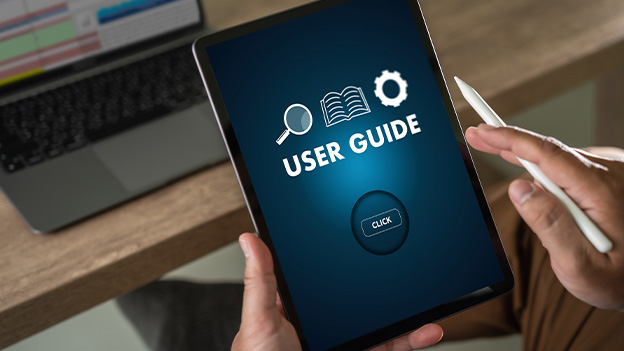
































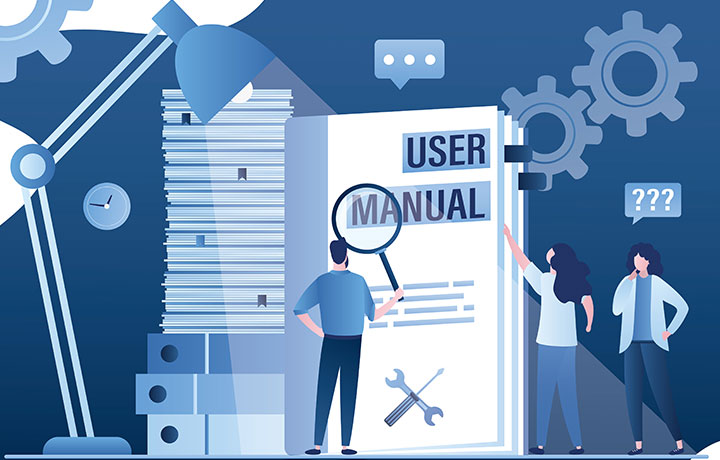



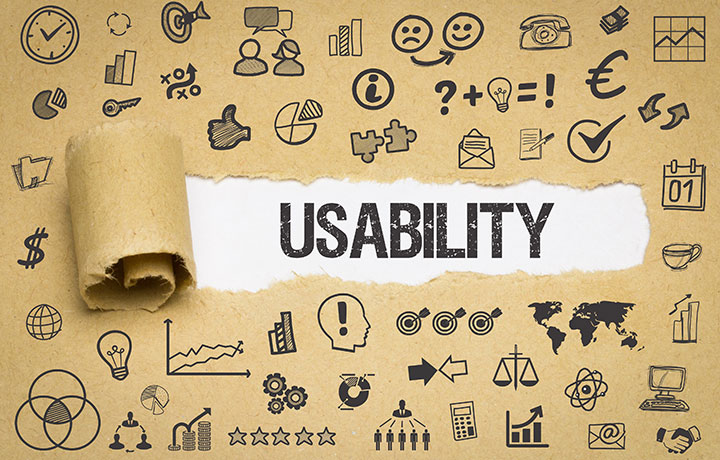





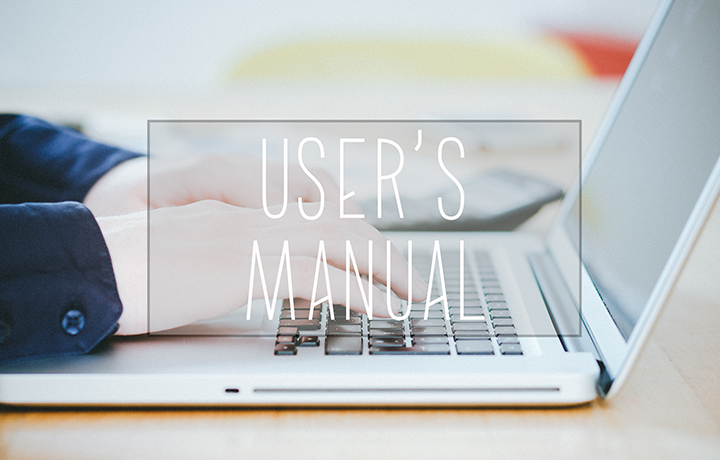











 Manual creation
Manual creation Director, Writer
Director, Writer In-house Support
In-house Support Video
Video Manual
Manual Manual Creation
Manual Creation One-Stop Service for Manual Creation
One-Stop Service for Manual Creation Manuals and Documents
Manuals and Documents